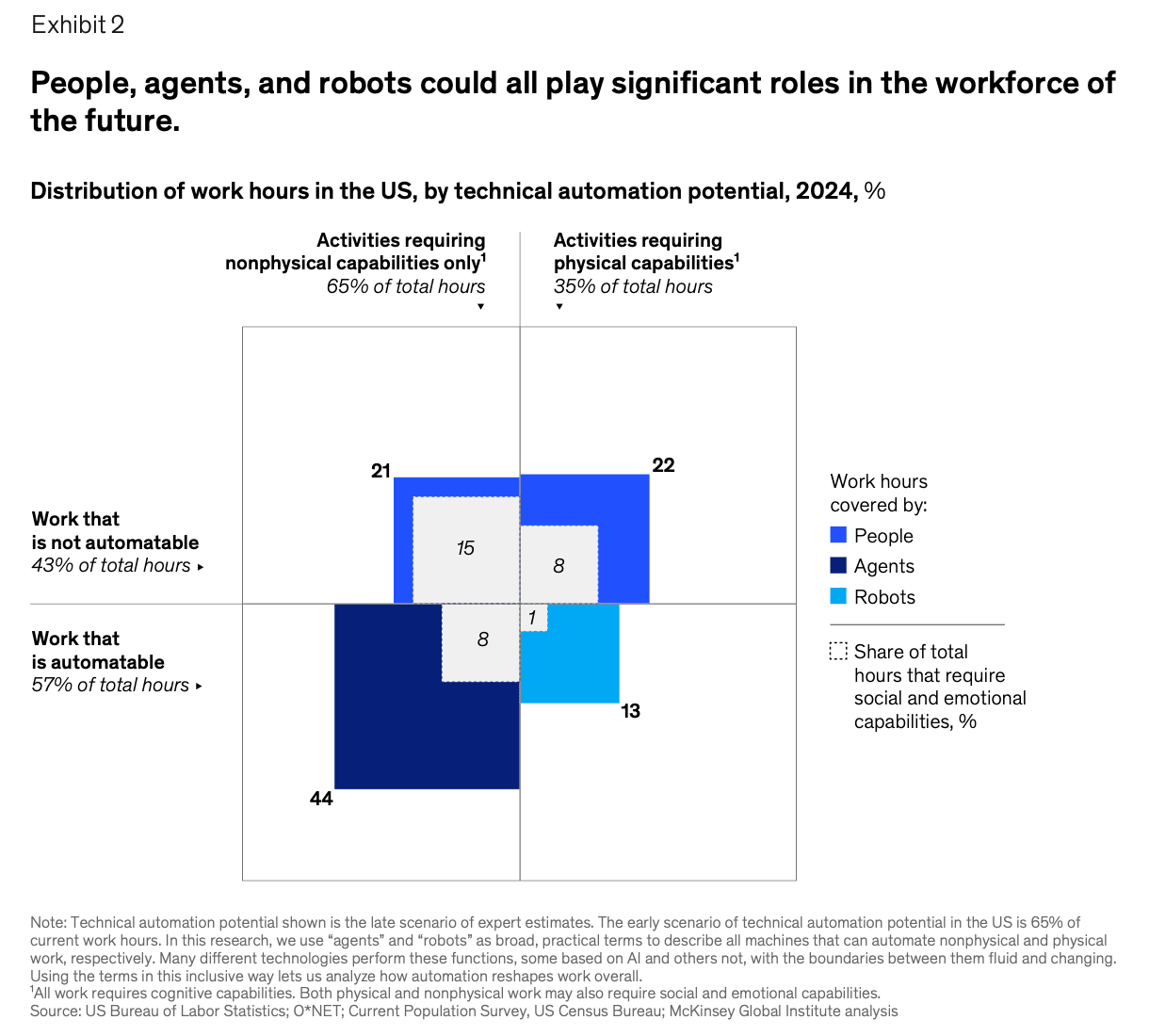AI Transformation: What Hides Under the Iceberg?

I spent the week immersed in new research on the Iceberg Index, which models 151 million U.S. workers, 923 occupations, and 32,000 skills using the Frontier supercomputer. It reveals something that resets how you think about AI in organizations.
The disruption most people are watching in engineering and tech jobs? It covers just 2.2% of the total wage value, about 211 billion dollars. The real transformation is much larger and sits beneath the surface. 11.7% of tasks across finance, HR, operations, legal, logistics, and professional services already fall within technical AI capability. That is nearly 1.2 trillion dollars in wage value.

This is the shift organizations are not prepared for.
AI is not only a technology shift. It is a skills shift, a confidence shift, and a leadership shift.
Here are the forces that define how organizations truly become AI-ready.
1. Real AI Transformation Begins With a Skills X-Ray
Most companies still begin their AI journey by choosing tools. The Iceberg Index shows why this approach is too shallow.
Researchers mapped AI capability across 13,000 enterprise tools and compared them to task-level skills across the entire labor market. Skills like document processing, compliance checks, administrative coordination, and routine analysis show deep overlap with AI capability. These sit inside millions of roles, not just tech teams.
Even geography reveals surprises. South Dakota, North Carolina, and Utah show higher cognitive-automation exposure than California because financial, administrative, and coordination work is everywhere.
A skills X-ray gives leaders what they are missing.
People understand which parts of their job may change.
Leaders see capability gaps before they become performance gaps.
Training becomes targeted instead of generic.
AI stops being an abstract future and becomes a real present.
And this is where the McKinsey data on People–Agent–Robot partnerships adds crucial context. Insert this as a quote block inside the key point:
“Machines now handle routine tasks while people frame problems, guide AI agents, interpret outputs, and make decisions. Today’s technology could theoretically automate 57% of U.S. work hours, but adoption will take time.
McKinsey’s skill analysis spans 800 occupations, 2,000 detailed work activities, and 34,000 skills. After filtering, they identified 7,000 core skills, mapped into 3.4 million skill–task combinations. Nearly 1/3 of occupations will see more than 10% of their skills highly changed by 2030.”

This is the partnership emerging across the economy.
People structure the work. Agents and robots execute and accelerate it.
2. The Hidden Shift Is Larger, Faster, and More Distributed Than Expected
The largest and fastest AI shift is happening in white-collar work, not software engineering.
The hidden layer is 11.7% exposure versus the visible 2.2%.
The automatable mass of tasks is five times larger beneath the surface.
Even industrial states show unexpected patterns.
Tennessee sits at 11.6% exposure.
Ohio sits at 11.8%.
Michigan follows closely behind.
Researchers call this automation surprise.
Organizations expect robotics.
They get cognitive automation first.
Traditional indicators offer no help. GDP, income, or education explain less than 5% of the variation. In some states, the correlation even turns negative. Delaware shows higher exposure than California because its economy is concentrated in finance and corporate administration.
Preparing only your tech teams is preparing for the last war.
3. The Next Era of Leadership Is Advisory, Product Driven, and Skills First
As AI absorbs predictable tasks, managers shift into the roles they were meant to play. Less about process control.
More about sensemaking, coaching, decision quality, and workflow design.
The Iceberg model aligns with what high-performing leaders already feel. AI removes repetition. What remains is judgment, creativity, coordination, and care.
Leaders become:
- Advisors, raising the quality of team decisions
- Product owners, shaping workflows and experiences
- People scientists, using data to guide performance
- Coaches, helping teams build capability
None of this requires them to be technologists.
It requires them to be AI fluent, using AI daily so the conversations inside their teams become sharper and faster.
When leaders engage, organizations accelerate.
Better habits. Better ownership. Better ways of working.
The Bottom Line: How Organizations Become AI Ready
Across every company we work with, the same behaviors separate those who thrive.
- Learn Out Loud: Leaders model learning, so experimentation becomes safe.
- Start With a Skills X-Ray: Replace guesswork with clarity about exposure and opportunity.
- Build Role-Based Learning Journeys: Training becomes the engine of capability, moving people from awareness to practice to mastery.
- Use Simple Governance for AI Use Cases: A clear scoring system keeps teams focused on meaningful wins.
- Build a Distributed Network of AI Champions: Change sticks faster when leadership is shared, not centralized.
If your organization wants to move from scattered experiments to real transformation, our Enterprise AI Enablement program is built for exactly this moment. Through mobile-first, in workflow lessons, every employee learns to work confidently with your approved AI platforms and produce real outputs tied to their daily tasks. Teams follow role-specific tracks so Sales, HR, Operations, and Marketing each build fluency in the tools that matter to them most. Leaders get visibility, consistency, and a rollout plan that scales across the entire workforce. By the end, organizations leave with a capable, AI-fluent team and working assistants already embedded into daily work.










